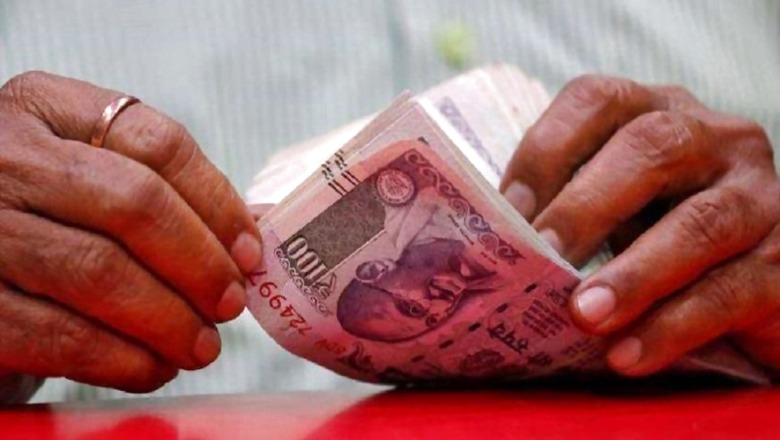
views
At Rs 5,55,900 crore, the states whose finances have been ravaged by the pandemic, have snapped up as much as 43.5 per cent more debt from the market during the first nine months of the current fiscal with the conclusion of the last auction on Tuesday when 13 of them borrowed Rs 18,900 crore. According to an analysis by rating agency Icra, states had borrowed Rs 3,87,400 crore in the first nine months of FY20.
But given the steep fall in redemptions to Rs 95,400 crore during the first three quarters from Rs 1,06,800 crore of FY20, net issuance rose by an even higher 64.1 per cent during the first three quarters of FY21 to Rs 4,60,400 crore from Rs 2,80,600 crore in FY20. What is significant is that over 65 per cent of these Rs 5.55 lakh crore borrowing have been lapped up by just five top borrowing states with Maharashtra borrowing Rs 39,500 crore more, Karnataka Rs 25,900 crore more, Tamil Nadu Rs 16,600 crore more, Andhra an additional Rs 15,300 crore and Telangana drawing down Rs 13,400 crore more during these months.
This means that these five states account for more than 65 per cent of the incremental market borrowing in the first nine months, according to the Icra analysis. On Tuesday, which marked the last auction of the quarter, 13 states and one Union Territory sold Rs 18,900 crore through the auction–which is nearly 44 per cent higher than the amount initially indicated for the week and twice as high as the year-ago level.
As much as Rs 91,00 crore or about 48 per cent of the issuance was in the 10-year bucket, Rs 6,700 crore or 36 per centin the 10-30-year tenors, and the balance Rs 3,100 crore or 16 per cent in shorter tenor loans. At 6.58 per cent, the weighted average cut-off of the 10-year loan in today’s auction was unchanged relative to the previous week, while the 10-year G-sec yield declined 2 bps to 5.89 per cent in the same period. Accordingly, the spread between the 10-year state loan and the G-sec increased to 70 bps today from 67 bps in the previous week.
Overall, in Q3, gross issuance stood at Rs 2,02,300 crore, almost similar to the Rs 2,02,200 crore that the RBI had initially indicated for this quarter on September 29. In terms of the month-wise trend in Q3, he issuance was higher than indicated in October at Rs 74,200 crore vs Rs 66,500 crore. Subsequently, the actual issuance in November stood at Rs 63,200 crore, 4.3 per cent lower than indicated at Rs 66,100 crore, which widened to 6.9 per cent in December to Rs 64,800 crore vs Rs 69,600 crore.
States with lower-than-indicated issuance in Q3 included Maharashtra, Haryana, Bihar and Andhra while Bengal, Rajasthan, Telangana, TN and UP exceeded the indicated amount. On an annulaised basis, the gross issuance expanded by 24.9 per cent in Q3 to Rs 2,02,200 crore from Rs 1,61,900 crore in Q3 of FY20. And since redemptions declined to Rs 39,400 crore from Rs 44,300 crore in Q3, net issuance rose by a sharper 28.8 per cent to Rs 1,57,900 crore in Q3.
In an encouraging development, the RBI conducted open market operations in state bonds for the first time in Q3 wherein it purchased Rs 10,000 crore in each of the three OMOs, in the 9-11-year buckets. Despite this, the spread between the weighted average 10-year issuance cut-off and the 10-year G-sec rose to 69 bps in Q3 from 64 bps in Q2.
Read all the Latest News, Breaking News and Coronavirus News here



















Comments
0 comment